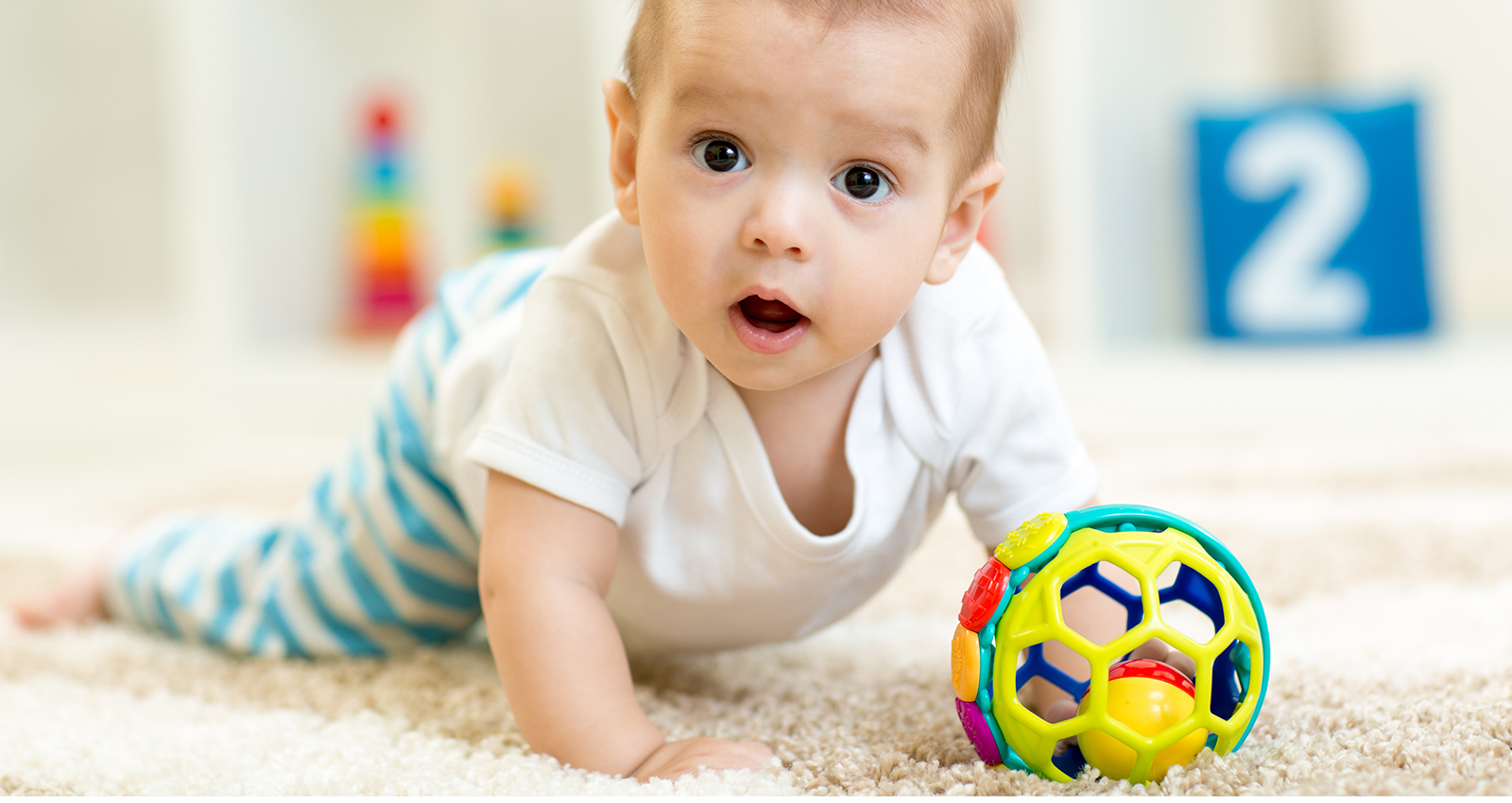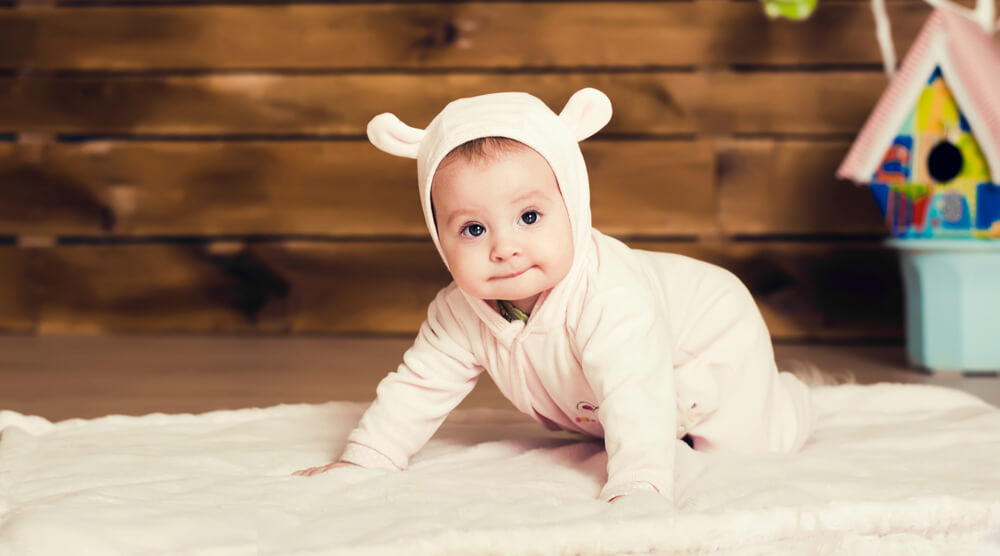The verb “to crawl” means to advance with the hands and with the knees on the floor (referring to the children who have not yet learned to walk). We often think that skipping this motor step and going directly to walking has no importance from the motor point of view, from coordination and cognitive development, but we will see that it is not so. The crawling prepares newborn growth and trains the child for his future motor coordination; moreover, the transition from quadrupedal to bipedal (standing) allows the formation of physiological curves.
Usually the period between 6 and 8 months requires that the child acquires the ability to stay balanced on hands and feet on his stomach. Generally between 9 and 10 months the crawling starts, but there are children who start even later. It is not important to anticipate the motor stages as much as to reach them when you are really ready!
Thanks to the crawling the child:
- Eye-hand coordination increases: when children examine an object, for example, they learn to develop distance and positioning and to use hand movement to reach it in synchrony with the eyes, which must be able to work together.
- Learn to use both ears and both eyes (binocular vision).
- Develops proprioception: learns to perceive the position of the body in space and the degree of contraction of one’s muscles even without visual aid.
- Develops cognitive functions. Have you ever heard of the right and left side of the brain? Well, in order to work at their best, these two parts must be in full communication with each other, and their ability to communicate is not an entirely innate ability. The movements required to crawl lead the two sides of the brain to interact with each other, creating areas of information important for the maturation of the various cognitive functions.
- Self-confidence increases: the child also learns to make decisions about destination and speed, and experiences the pleasure caused by achieving his goal.
- Develops the crusader scheme, or the neurological function whereby the right arm moves in sync with the left leg and vice versa.
A crawling child represents progress both physically and neurologically; moving in this way also prepares him to subsequently develop more complex skills, such as the ability to read and write.

The child develops passing through precise and programmed phases that, if anticipated, lead to a neurological disorganization. Links have been found between cataphoresis and dyslexia, poor coordination, lack of concentration and learning disabilities. All this is due to interferences of neurological development, of integration between right and left hemisphere; this does not mean that the absence of crawling is the cause of the aforementioned conditions, but that there are pre-existing problems that prevent or slow down the crawling and also affect the problems I have mentioned.
Why is a child not crawling?
It depends on many variables, not only from the maturation of the central nervous system, but also from the resultant of a series of factors that cooperate with each other: environmental or motivational factors (a child who is often held in the arms, in the box or in the walker will be little motivated). Some children completely jump the crawling, others find different systems to move: those who move in a quadruped position using a single leg and holding the other bent and rotated outside; who is sitting on the ground and moves with small jumps or dragging; whoever sits down with one little leg folded and the other stretched out and drags himself along with his buttocks on the ground; who with the help of hands and legs, advances rolling on the ground; who moves by crawling the tummy to the ground and advancing first with the arms and then with the legs.
THE OSTEOPATHIC POINT OF VIEW:
The motor and postural expression of each child shows us its tensions and areas of little mobility, in these cases we can find mechanical tensions of the pelvis and hips (for example in children who were podalici during pregnancy). Often a pelvis that has developed more tension on one side than the other related to a preferential rotation of the baby’s head, is associated with positional plagiocephaly. Furthermore, in these cases the newborn, much more frequently, is kept on his back all the time (this is certainly to prevent SIDS), but this is at the expense of fundamental and preparatory positions for the subsequent motor stages, such as position on his stomach (if this last position is neglected in the first months, when subsequently the child is positioned there, he struggles to maintain it, cries and gets nervous).
How does the osteopath intervene?
The osteopath will work on the most deficient areas at the level of the skull, at the fascial level and at the structural level, to allow the achievement of a balance that allows the child to regulate himself and to be able to make the most of all his motor skills. Generally after the osteopathic treatment some advice is dispensed and the exercises to be done at home (which may vary from one small patient to another) are customized, with the aim of strengthening and optimizing the osteopathic treatment.
What are the tips and exercises for parents at home?
- Do not anticipate the stages, even if we are all proud to show how our child walks and eats early alone.
- Leaving the baby on his stomach (even when he is very small, even with his mother on his stomach) even during a diaper change, and then even for a few minutes during the day helps his development. Around 4 months he will be able to support his head and look around.
- Get on the ground together with the baby to make him feel more at ease, especially at the beginning.
- Limit the time your child spends on a high chair, stroller, baby cot or bouncer.
- If the child is fed with formula, give the bottle not always from the same side so as not to always limit the same arm and the same eye, but alternate the positions for the bilateral development of the eye and arm.
- Leave the child on the ground as much as possible, using interlocking mats or creating an environment where there are no risks associated with stairs or heavy objects.
- Crawl alongside the child, moving together towards the toy or to another object that has caught his attention.
In short, we must leave the child completely free to explore the world around him and his new motor skills.


